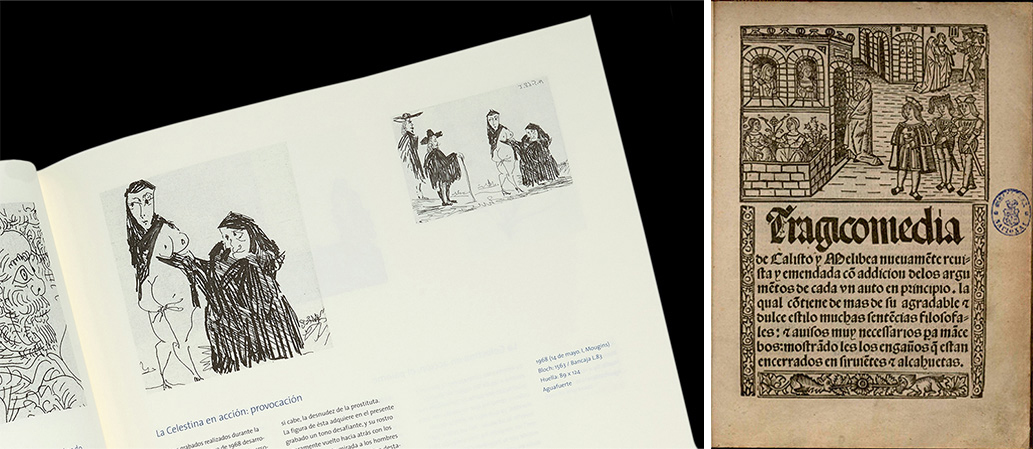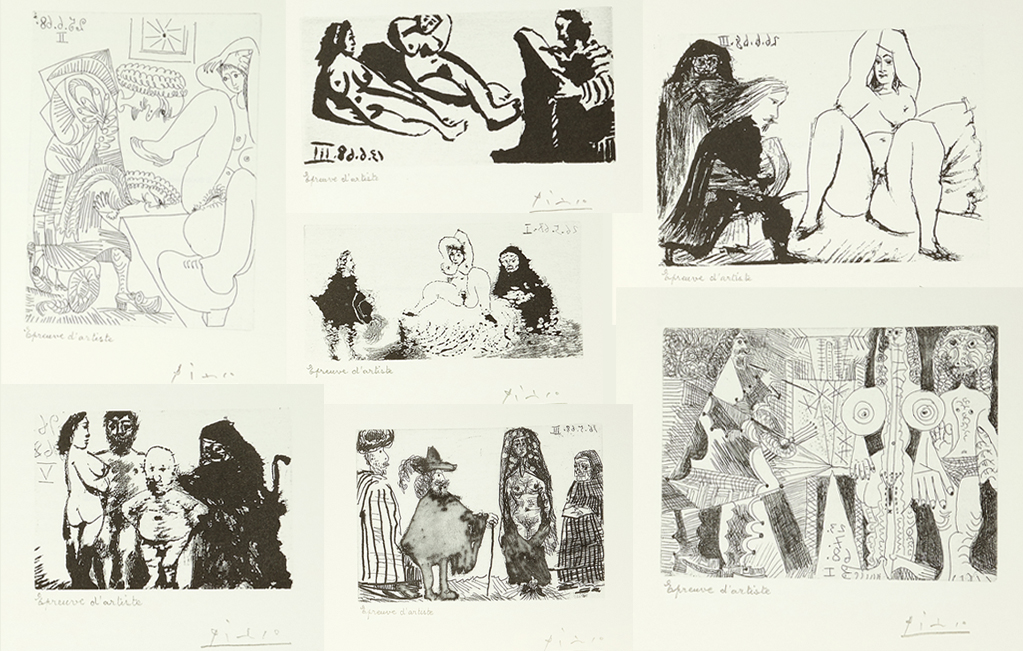Eroticism and darkness: La Celestina illustrated by Picasso
This 25 October marks the 140th anniversary of the birth of Pablo Picasso (1881-1973). At ARTIKA we want to celebrate the artist through our exclusive edition of La Celestina, illustrated with engravings by the brilliant Málaga-born artist. Picasso’s fascination with the character, a mediator between lovers and trafficker of hidden desires, gave rise to an incomparable art book.
History of a seduction
The character of La Celestina captivated a young Picasso. There is a copy of a print by Goya that the Málaga-born painter produced in 1898. It is the iconic image of a procuress, which has been part of the history of literature since the play by Fernando de Rojas was published in 1499.
Picasso was an avid reader of the classics of the Golden Age, and The Tragicomedy of Calisto and Melibea, as La Celestina was known in his time, was one of his favourites. Although the original play tells the story of the young couple’s love affairs, the character of the old woman who hides them eventually took the spotlight.

Detail of the Study Book of the work of La Celestina (detail of La Celestina in action: provocation, 1968)
La Celestina by Fernando de Rojas, 1502 (year of publication).
She is a figure fraught with nuances and deception: aiding love affairs in some cases, responsible for connecting prostitutes and clients in others, she moves in the shadows and defines her work as a service to others, although deep down she only acts in her own interests.
Picasso found a source of inspiration in the story of a older woman who trades in desire and hope, who knows the language of greed and loneliness all too well. This interest materialised during his blue period in the oil painting La Celestina (1904), a tribute to the classic procuress, through the portrait of a Barcelona brothel owner.
A ground-breaking take on the legend
Picasso was 86 years old in May 1968 and still had all the creative vitality of his best years. While a social revolution was breaking out in France, Picasso began to produce daily engravings until he completed an extensive series that amounted to an artistic journal of that period of his life: these images reflect not only what he saw and felt, but also what was sparked in his imagination.
The result is the set of engravings known as Suite 347, which includes 66 images inspired by La Celestina. The series is a loose interpretation of the classic’s undisputed protagonist. Among other techniques, Picasso used sugar aquatint (also called lift-ground etching) to enhance the drama of the ink strokes.

Sample of some of the engravings included in the work of La Celestina.
The pieces stand out for their eroticism. They depict bedroom scenes, and many include the dark, fragile presence of the woman who seals the deal: an old woman bent over and covered by her mantilla, the veil in which the matchmakers are usually depicted, in addition to the headdress or headscarf.
These images are not limited to their sensual impact: Picasso also offers an ironic perspective, one that unveils the grotesque character of the visitors who demand the attentions of the procuress’s young pupils.
Picasso at ARTIKA
The ARTIKA catalogue includes La Celestina, an exclusive book on the classic that brings together the engravings that Picasso himself selected to illustrate one of his favourite literary works.
This limited edition of 2998 copies, already sold out, is rounded out with a Study Book that includes analyses by five experts in Picasso’s life and work that reveal all the nuances hidden in each of the engravings. It is presented in a deluxe, Antibes blue case.
La Celestina is the legacy of a Pablo Picasso at the height of his personal and creative maturity, already famous worldwide, who chose to channel his inspiration with absolute artistic and expressive freedom.

